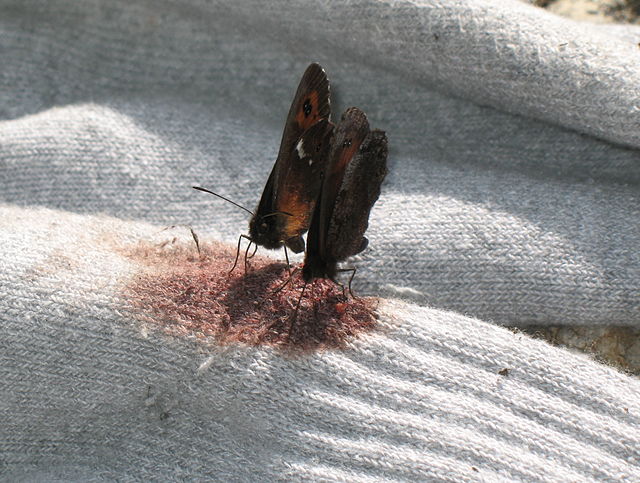The chupacabra or chupacabras is a legendary creature, or cryptid, in the folklore of parts of the Americas. The name comes from the animal's reported vampirism—the chupacabra is said to attack and drink the blood of livestock, including goats.
Chupacabra
Graphic depiction of Chupacabra, as described by Puerto Rican witnesses in 1995
Mange can often greatly alter the expected appearance of an animal. Wild and domestic canines with severe cases of mange have been proposed as explanations for the Chupacabra.
Hematophagy is the practice by certain animals of feeding on blood. Since blood is a fluid tissue rich in nutritious proteins and lipids that can be taken without great effort, hematophagy is a preferred form of feeding for many small animals, such as worms and arthropods. Some intestinal nematodes, such as Ancylostomatids, feed on blood extracted from the capillaries of the gut, and about 75 percent of all species of leeches are hematophagous. The spider Evarcha culicivora feeds indirectly on vertebrate blood by specializing on blood-filled female mosquitoes as their preferred prey. Some fish, such as lampreys and candirus; mammals, especially vampire bats; and birds, including the vampire finch, Hood mockingbird, Tristan thrush, and oxpeckers, also practise hematophagy.

An Anopheles stephensi mosquito obtaining a blood meal from a human host through its pointed proboscis. Note the droplet of blood being expelled from the engorged abdomen. This mosquito is a malarial vector with a distribution that ranges from Egypt to China.
A bedbug
Two butterflies of the genus Erebia sucking fresh blood from a sock






